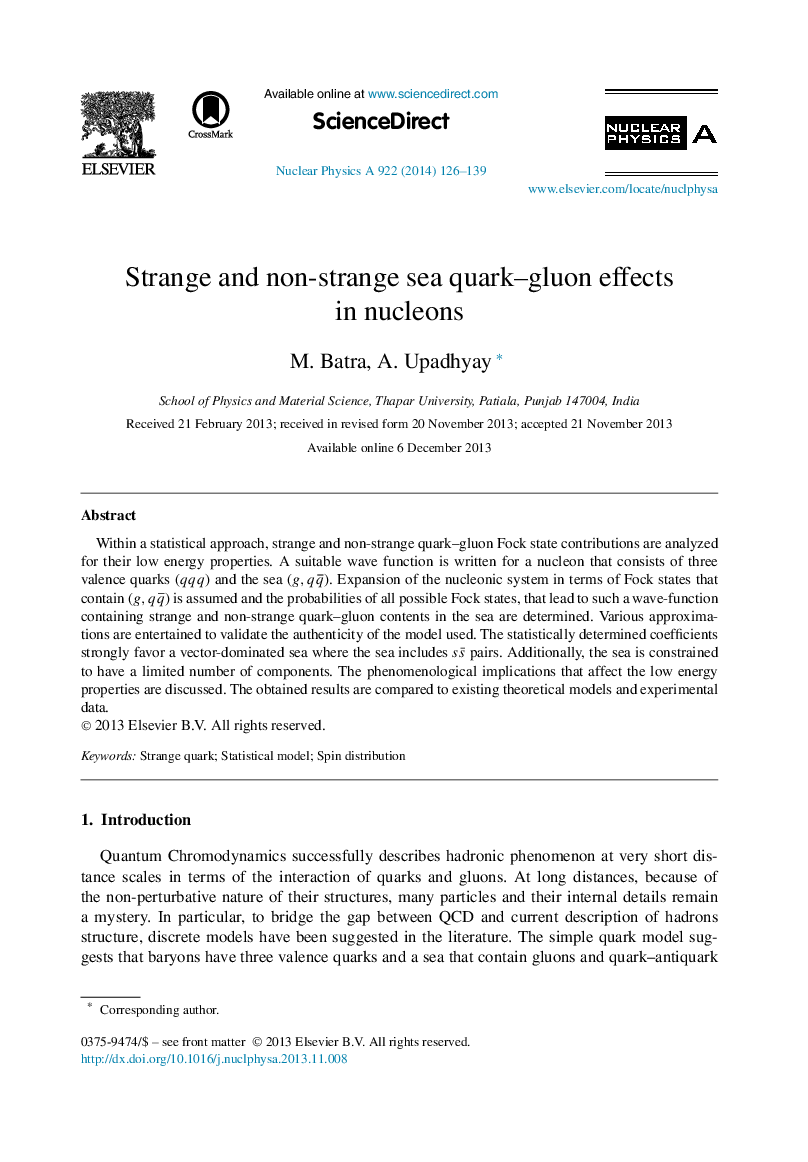| Article ID | Journal | Published Year | Pages | File Type |
|---|---|---|---|---|
| 1835876 | Nuclear Physics A | 2014 | 14 Pages |
•A general expression to determine probabilities for each quark–gluon Fock states.•To calculate probabilities in flavor, spin and color space in statistical framework.•To analyze the sea-content and examine the contribution to various properties.
Within a statistical approach, strange and non-strange quark–gluon Fock state contributions are analyzed for their low energy properties. A suitable wave function is written for a nucleon that consists of three valence quarks (qqq ) and the sea (g,qq¯). Expansion of the nucleonic system in terms of Fock states that contain (g,qq¯) is assumed and the probabilities of all possible Fock states, that lead to such a wave-function containing strange and non-strange quark–gluon contents in the sea are determined. Various approximations are entertained to validate the authenticity of the model used. The statistically determined coefficients strongly favor a vector-dominated sea where the sea includes ss¯ pairs. Additionally, the sea is constrained to have a limited number of components. The phenomenological implications that affect the low energy properties are discussed. The obtained results are compared to existing theoretical models and experimental data.
